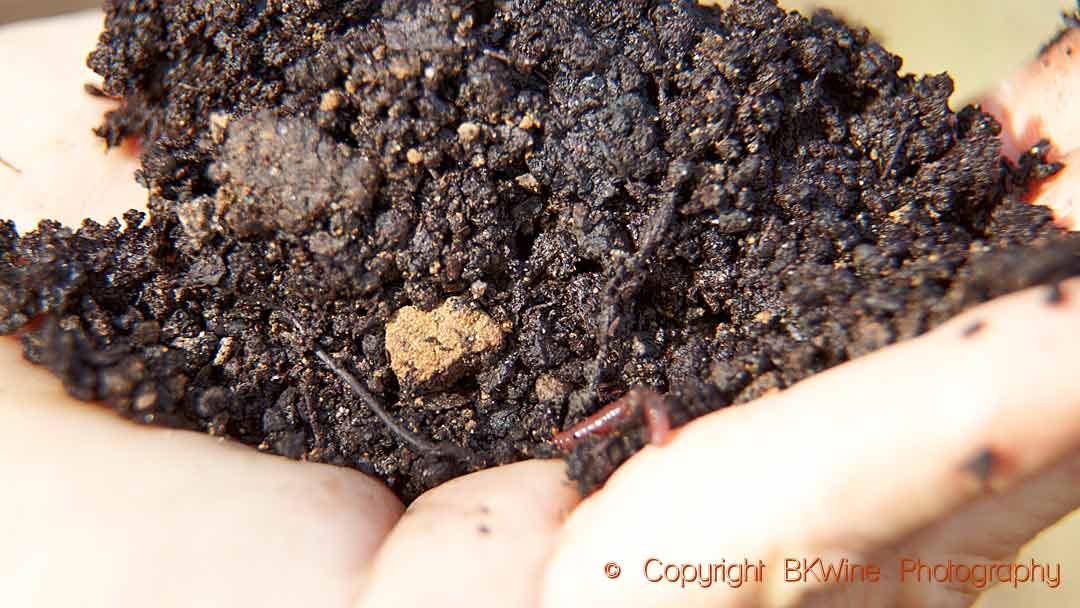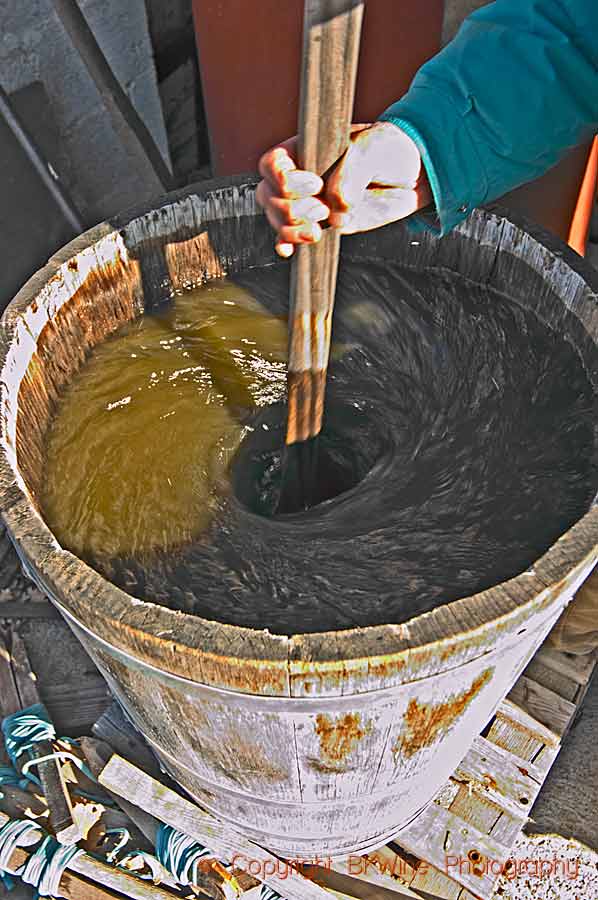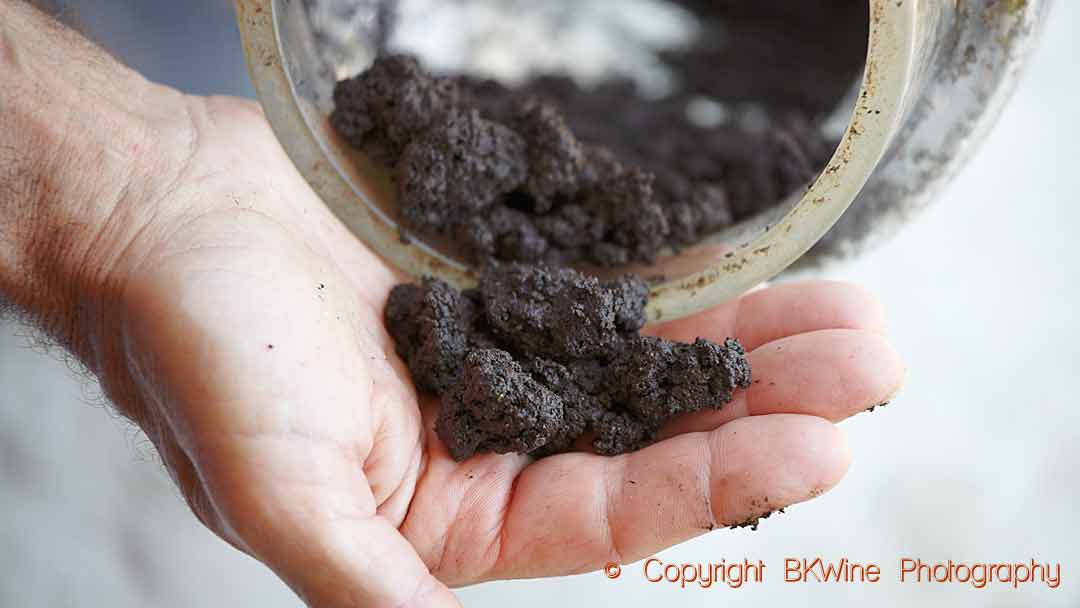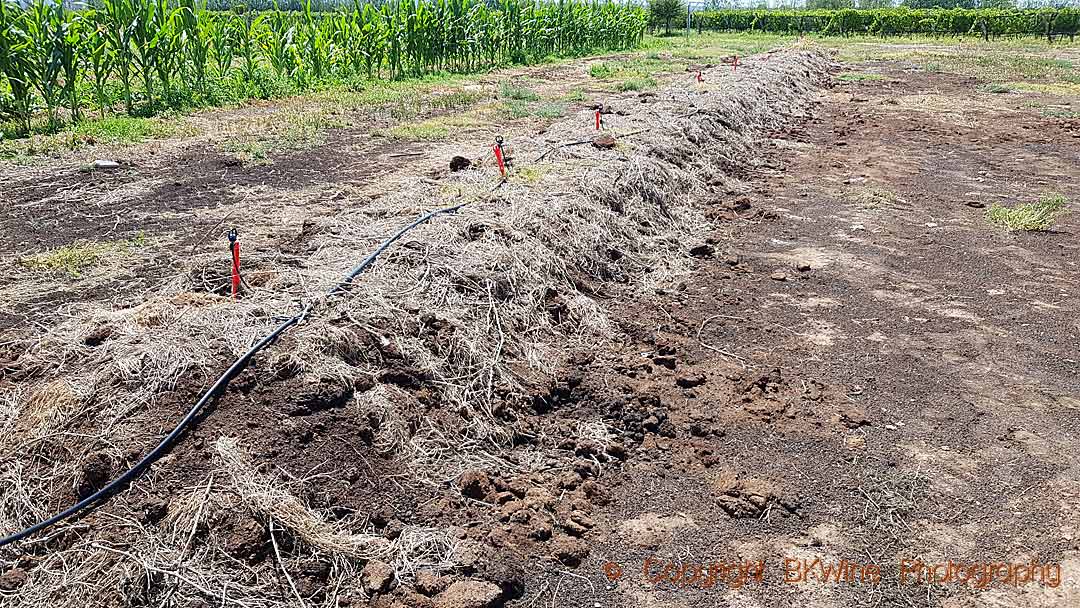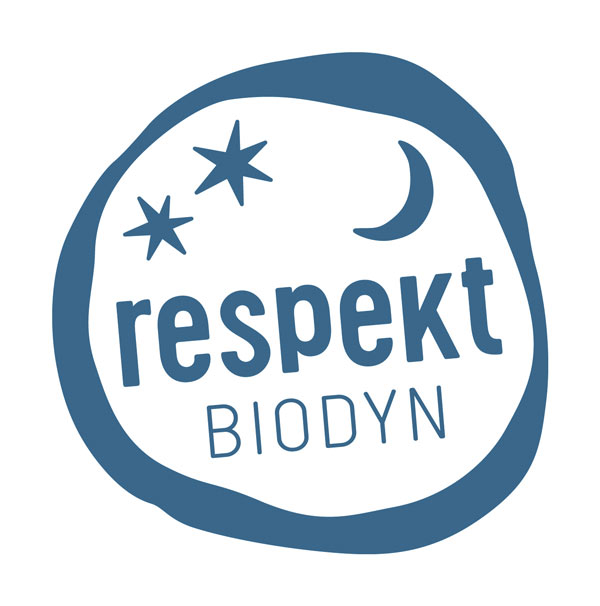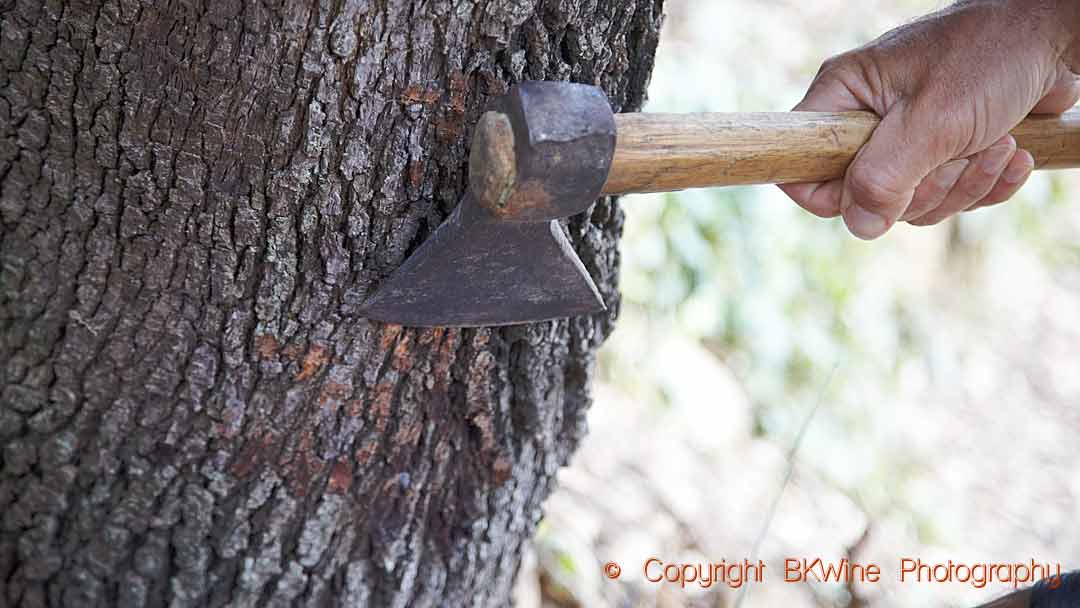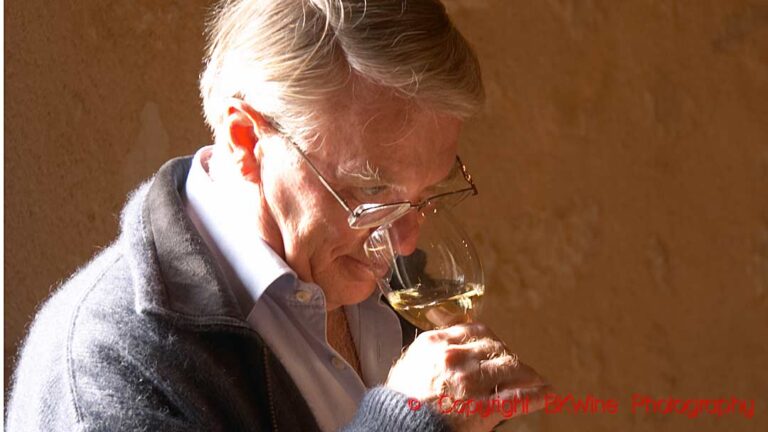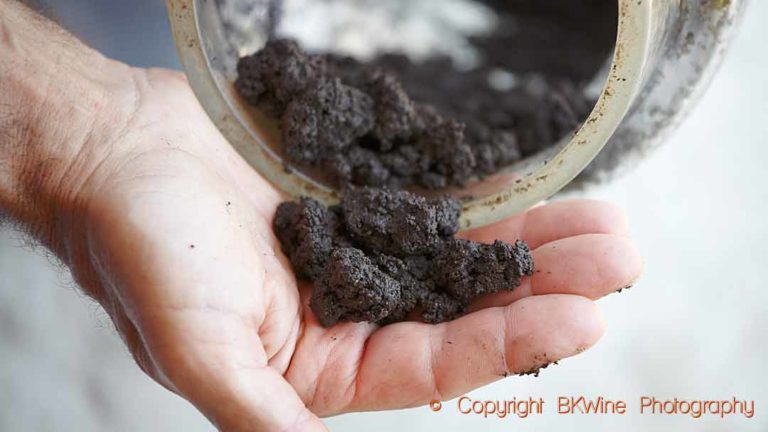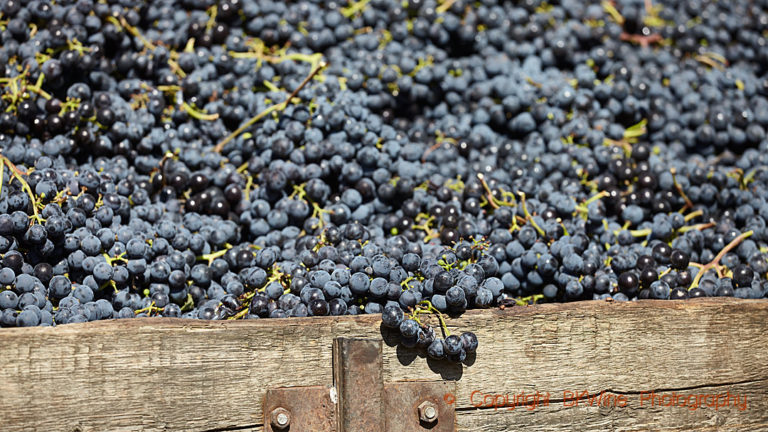Being biodynamic is not the same as being organic, even though they have many things in common. Only a tiny proportion of organic growers are also biodynamic. But their number is growing.
If you want to be biodynamically certified, you must also be organically certified. Using synthetic pesticides or fertiliser is in any case entirely against the biodynamic beliefs. Everything you add to the soil must come from living things, either from the plant kingdom or from the animal kingdom, says Rudolf Steiner, the creator of biodynamics
Steiner founded biodynamic agriculture in 1924 as a reaction to synthetic fertilisers, which had already been used by farmers for some years. The soil was being impoverished, he said. Artificial fertiliser is not healthy, he wrote, because it is a “dead” fertiliser of nitrogen, potassium and phosphorus.
This is an article in our eight-part series. Here’s the full series of articles on organic, biodynamic, natural and sustainable:
- Organic, biodynamic and sustainable wine, an overview | part 1
- Organic viticulture: What is it really? | part 2
- Organic wine: in the wine cellar | part 3
- Organic certification | part 4
- Biodynamics: What is it really about? | part 5
- Natural wines | part 6
- Sustainable wines | part 7
- The future of organic wines | part 8
- Bonus: Video master class on organic wine
Wine journalists like to write about biodynamic winegrowers. They are fascinated by the subject even if they do not always understand it. It is challenging to understand biodynamic agriculture, something that some of the producers themselves acknowledge. Rudolf Steiner was also the founder of anthroposophy, a spiritual “science” and not easy to make sense of, and that has many critics.
We have many times heard biodynamic winemakers tell us that they had a hard time believing in the method before they saw the result with their own eyes. Hugh J. Courtney at the American Institute of Applied Biodynamics has spent a lot of time deciphering Steiner’s writings. Courtney says in an introduction to one of Steiner’s books: “Real understanding [of biodynamics] takes place not just by exercising one’s mental capacities, but only when one is ‘doing’ or taking action.”
In 1924, Steiner delivered a series of lectures to farmers on how the soil was to recover its health. These lectures were published, and here one can read about Steiner’s ideas on how to revitalise agriculture. He introduces the biodynamic preparations and describes in detail how to make them.
The spiritual ideas of Steiner may not attract everyone. If we look at the more practical side, biodynamic is about farming sustainably and making use of the properties of specific plants and minerals to strengthen the vines and build up their immune system. The idea is not to treat the diseases once it is there but to work preventively and try and avoid them from happening in the first place. With a rich biological diversity in and around the vineyard, you create a balance between nature and the farm.
The original idea of biodynamics is that a farm is a self-sustained unit. Everything you add to the soil, such as natural fertilisers, should come from your own farm or at least from close by, including the cow manure. This is, of course, impossible today for most wine estates. They don’t have room for animals and sometimes not that much space for other plants either.
The biodynamic preparations – the core of the method
The grower has nine biodynamic “preparations” to help him. These are the central pillars in biodynamic agriculture. It is above all these that distinguish biodynamic from organic farming.
The grower uses the preparations in the vineyard in homoeopathic, i.e. minimal, quantities. Three of them are sprayed over the vineyard and six are put into the compost. They are often named by their numbers, 500-508. Seven are composted by being buried in the ground for six months or a year. Two of these are put in cow horns and the five others in various animal parts, such as a bladder, intestines, or a skull. Steiner says that “living things always have an inner and an outer aspect”. The preparations must, therefore, be encapsulated in something while they are being composted.
This is what is difficult to understand for someone who is not familiar with anthroposophy. It certainly helps that the growers can buy the preparations ready-made. It is probably easier to accept the strange things about these preparations when you don’t have to make them yourself. Anyway, even if you want to, it can be challenging to make your own preparations today since it is hard to get hold of the necessary animal parts.
I want to point out though, that we know several producers who make all their preparations themselves. I was present a few years ago when a group of biodynamic winegrowers in the Rhône Valley together made the preparation 505, maybe the most complicated of all to make. It was quite an experience.
Here is a brief description of the nine biodynamic preparations.
500: Horn Manure
To make the 500 you fill cow horns with fresh manure from biodynamic or organic cows. You need one horn per hectare. The horns are then buried in the ground. Here they will remain during the winter. When they are dug up again, you have, according to Steiner, “an extremely concentrated, living manure”. The contents are diluted with water and mixed in a “dynamiser” (see below) before being sprayed over the vineyard.
According to Steiner, “the horns’ etheric and astral forces” are preserved even after the horns have been removed from the cow.
501: Horn Silica
501 is made in the spring and the cow horns, now filled with finely ground quartz, are buried during the summer. The quartz contains silica which conducts light and electricity, and the 501 will help the photosynthesis. Silica also strengthens the plant’s immune system.
508: Horsetail
508 is a decoction (sometimes the word “tea” is used) of horsetail (prêle in French), a plant that contains silica. Horsetail also contains sulphur, and therefore 508 also acts as a fungicide.
Note: see more pictures on this at the end of the article.
Dynamisation
501, 502 and 508 must be “dynamised” before being sprayed in the vineyard.
The dynamiser is a round container filled with water to which a tiny amount of the preparation is added. You stir the water for an hour, first in one direction during a short while and then you quickly change direction and stir in the other direction and then change direction again and continue like that for an hour. The water is thus sometimes in a vortex and sometimes in a “chaos” when you change direction. There are also alternative models that achieve the same effect. Since it is believed that water has a memory, the water will memorise the power of the biodynamic preparation and then pass it on to the vineyard.
The information must be passed on quickly to the vines, within a few hours. You save the preparations until it is time to spray, only then do you mix with water and dynamise. Those who buy ready-made preparations can keep these for a couple of years and do the dynamisation themselves when it is time to spray.
Note: see more pictures at the end of the article.
The biodynamic compost
The soil must be revitalised; this is one of the basic ideas in biodynamics. To this end, the compost is a vital ingredient in biodynamic agriculture. The compost becomes biodynamic by adding preparations 502 to 507.
502: Yarrow
Yarrow (achillée millefeuille) contains potassium and selenium. You pick the flowers and let them dry. You place them inside the bladder of a deer. This is hung up in a sunny place for the summer. When winter comes, it is buried in the ground and left there for the winter season. The contents are then removed and placed in the compost. The energy from this preparation, says Steiner, “is so strong that it affects the compost no matter how small an amount is added.”
503: Chamomile
The flowers of chamomile (camomile) are dried and made into little “sausages” using cattle intestines. They are hung up over the summer and buried during the winter. Chamomile contains calcium and nitrogen and also has a calming effect on vines after e.g. a hailstorm.
Note: see more pictures at the end of the article.
504: Stinging nettles
Freshly picked nettles are buried in the ground and left there for a year. “Nettles stabilise the nitrogen content of the soil”, Steiner writes. Nettles also help convert organic matter into minerals.
505: Oak bark
Ground oak bark is put in the skull of a sheep, pig or horse and buried in the autumn and winter. The bark is then removed, dried and added to the compost. Oak bark contains calcium and Steiner says that it helps to fight off diseases.
506: Dandelion
The dandelion (pissenlit) flowers are picked and dried before they are sewn up in a bovine mesentery. The package is buried in the ground over winter. When the preparation is taken up again, it is, according to Steiner, “thoroughly saturated with cosmic influence. When added to the compost, it will give the soil the ability to attract just as much silicic acid from the atmosphere and the cosmos as is needed by the plants”. Silicic acid increases the plant’s sensitivity to the environment.
507: Valerian
507 is the simplest of all preparations. The valerian (valériane) flowers are pressed and put to soak in plenty of water. Valerian stimulates phosphorus activity.
Note: see more pictures at the end of the article.
In addition to the preparations, there are several other natural decoctions that a biodynamic winegrower uses to keep the vines healthy. It can be essential oils of orange and fennel or potassium bicarbonate, and algae extract which have been shown to have some effect against powdery and downy mildew. Bacillus thuringiensis, a bacterial extract, can be used as an insecticide. Many producers who are not biodynamic but “only” organic, or not even that, use these preparations in different situations, so it is not something that is exclusively for biodynamics.
Today, it is quite common, even outside the biodynamic circles, among organic or conventional producers, to use different plant extracts or other types of preparations. A few years ago, we met a wine producer in Languedoc who had almost his entire crop destroyed by a hailstorm in the spring. They were utterly devastated until they got in touch with an expert in the field who, with the help of various plant extracts, “repaired” the vineyard and helped it recover, so that they at least got a reasonably big harvest. Another example is the so-called Cousinié method.
The biodynamic producer also sprays with copper and sulphur if needed (see more on that in Part 2 in the series, on organic viticulture). The limit for those who are certified (see below) is a maximum of 3 kilos of copper per year and hectare, which is one kilo less than for organic growers.
The cosmic rhythm and the four kinds of days
The “cosmic forces” were essential to Steiner. He believed that modern science thinks too narrowly minded and failed to take into account that these forces give energy to plants and then pass it on to us humans.
Steiner died in 1925, just one year after presenting his ideas on biodynamic farming. Other people have continued to develop his thoughts. One of them was Maria Thun (d. 2012) who created the biodynamic sowing calendar.
The calendar describes the positions of the moon and the planets to the fixed stellar constellations (zodiac) during the year but also the relations between the planets.
The 12 stellar constellations are divided into four different types, which each cover three constellations. With these, the biodynamics create an annual calendar with four different kinds of days suitable for different types of work:
- Root days: soil/roots (Taurus, Virgo, Capricornus)
- Flower days: light/flowers (Gemini, Libra, Aquarius)
- Leaf days: water/leaves (Pisces, Cancer, Scorpius)
- Fruit days: fire/fruit (Leo, Sagittarius, Aries)
Both the sun, the moon and the planets pass the fixed constellations. In the month it takes for the moon to move around the earth, it passes the 12-star constellations and transmits forces to the earth that express themselves according to these four different groups and that act on different parts of the plant. By sowing, harvesting, ploughing, planting on the right days, these forces are utilised and thus stimulate the vigour and growth of the plants.
When the moon is waning, the roots develop more easily, so it is good to move plants from one place to another. When the moon is waxing, the sap rises faster, and the top of the plant is full of vitality. This is a good moment to take cuttings. Breaking up the soil at different times will have different effects. Breaking up in the morning revitalises the plant, in the evening it keeps the water in the soil.
The calendar is made every year.
The calendar is not a mandatory element of the biodynamic certification. How much the biodynamic growers adapt their work to the calendar varies greatly. Some people think it is very important; others take it very lightly or do not follow it at all. The vast majority are pragmatic and say, for example, “If the grapes are ripe, we harvest whether it is a root day or a fruit day.”
Even some producers who are not biodynamic at all sometimes think it is beneficial to use the calendar or, for example, take into account the phases of the moon when working in the cellar.
It is important to note that “the calendar” and these other aspects of it are not part of the rules for biodynamic certification. All producers are free to use them or not.
Certification
The biodynamic wine producers can be certified by Demeter, the leading organisation for biodynamic agriculture, with headquarters in Germany. In France, some choose instead to belong to the Biodyvin association, which was founded in 1990 and is an alternative certification. It has around 100 members. In Austria, Respekt-Biodyn gathers about 30 members. These two smaller associations only certify wine growers, whereas Demeter certifies all farmers. There are also some others. Each certifying organisation has its own rules that may be different in some ways from the others, but all are quite similar.
One should also keep in mind that a biodynamic certification is a private “label”, so it is not something that is officially controlled by any governmental authority. This is one major difference to organics which is government-controlled.
If you are certified, you must use 500 and 501. You have to add all compost preparations to your compost. As mentioned above, the use of copper is limited to 3 kilos per year and hectare.
Stricter rules in the wine cellar
Demeter and Biodyvin have similar rules (albeit not identical) for what you can do in the cellar during the vinification and ageing. The rules are much stricter than for organic growers. (See Part 3, on what organic wine producers can do in the cellar.)
A biodynamic grower is only allowed to:
- Add a small amount of sugar or concentrated grape must to increase the alcohol content by a maximum of 0.9%
- Use temperature control during fermentation
- Use sulphur dioxide, but in smaller amounts than the EU organic regulations
- Use bentonite, casein, egg whites and pea protein for clarification
- Filter (but not with a tangential filter)
Cultured yeast can be tolerated in certain specific cases.
For the ageing, oak chips and staves are not allowed. Demeter France does not allow plastic corks, plastic bottles or bag-in-boxes.
Biodynamic but without certification
Some choose to work biodynamically without being certified, and since BD is not under any sort of government control, anyone can say they are biodynamic without having a certification (as opposed to “organic” where you must have a certification if you say you are organic).
It is up to everyone to interpret Steiner. So it is impossible to say precisely how widespread biodynamic winegrowing is. Demeter certifies approximately 700 wine producers worldwide. Together they have 12,000 hectares. France dominates with more than 300 producers and 5000 hectares.
There may be a trend today among producers to become biodynamic for marketing reasons. It’s a way to get attention. It is fashionable today to be biodynamic. Whether everyone who claims to work biodynamically does so according to the teachings of Steiner, is hard to know.
Does it work?
Biodynamic growers we know tell us about the concrete results they have seen in the vineyard and in the wines. One thing that many mention is that the wines have a higher acidity. The vines have a stronger resistance against fungal diseases. In general, the vines are healthier, the grapes ripen better, and the wines have a better balance.
Many of the biodynamic growers make magnificent wines. Is it due to the biodynamic preparations? Or that they are talented winemakers? Or that they are better observers and better understand their environment?
It is difficult to understand the sometimes harsh criticism that biodynamics has sometimes suffered. Of course, there is a lot in biodynamics that is not scientifically proven, and that seems strange. But at the same time, there is nothing in the method that is harmful. So why not let those who think it works do so? There is much that is not scientifically understood or proven in wine, e.g. that 12 C is the perfect cellar temperature, that there is something called a terroir character, that filtration removes flavours, or that a particular type of glass gives a better wine experience. So why reject biodynamics on the basis being non-scientific?
When the winegrowers themselves say that biodynamic agriculture works, how can you say that they are wrong? It does not mean that you have to understand or agree with their methods. I know that I never will understand how it works. But that does not stop me from appreciating the wines and the people who make them.
Don’t miss the other articles in this series on organics, biodynamics, sustainable, and natural wines. See the list at the beginning of this article.
If you want to know more about this subject you can read our book “Biodynamic, Organic and Natural Winemaking”.


